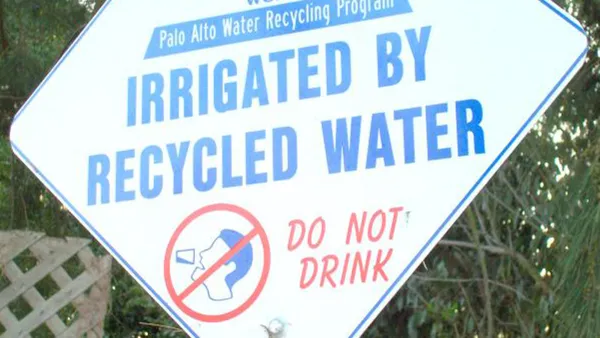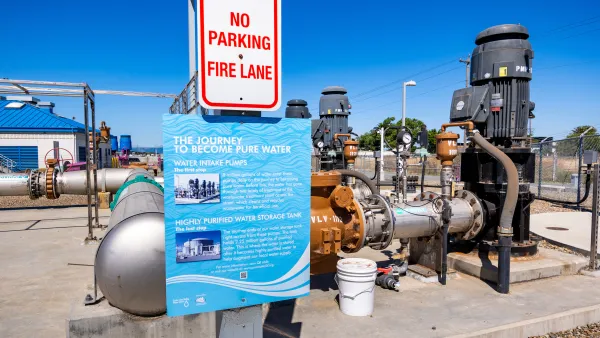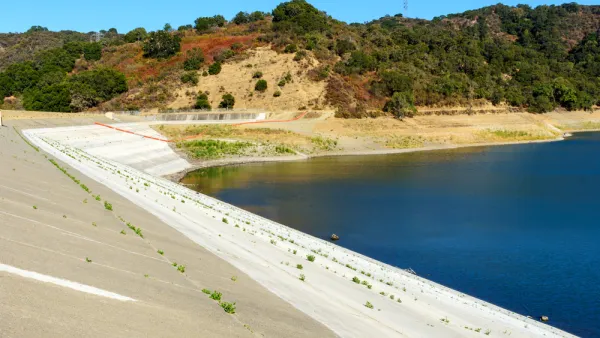San Francisco's PUC headquarters, "one of the greenest buildings in the nation," cut costs while introducing cutting-edge sustainable technologies to the city.
In the midst of the 2012 recession, during a construction downturn, San Francisco's Public Utilities Commission made the somewhat unusual decision to build a brand new, state-of-the-art headquarters.
In doing so, it saved ratepayers $3.7 billion over the building’s 100-year lifespan—and provided a model for sustainable development in the city with pioneering approaches to earthquake resiliency, renewable energy, and water recycling.
The 13-story, 277,000-square-foot HQ is rated LEED Platinum. It's the first building in the city with an onsite recycling system for non-potable wastewater, and spurred the creation of a citywide permitting process for similar systems.
The Living Machine, as it's called, treats about 5,000 gallons of water per day, enough to supply the building’s low-flow toilets and urinals. In all, the building uses 60 percent less water than similarly sized buildings—and even harvests rainwater in a 25,000-gallon cistern.
An integrated hybrid solar array and wind turbine generates 227,000 kilowatts a year, or about seven percent of the building’s annual energy needs.
Smart solutions at every level worked to make sustainability and resilience affordable. An innovative approach to earthquake safety also worked to reduce the building height, in turn bringing down the total construction cost.
That approach was the now-common use of vertical, rather than horizontal, post-tension. In layman’s terms, "Our building acts like a tuning fork. It moves back and forth, and then it comes back into place after the shaking has stopped."
SFPUC's general manager Harlan Kelly explains more about the building, and what made it possible, in The Planning Report.
FULL STORY: San Francisco PUC Built State-of-the-Art Sustainable Headquarters

National Parks Layoffs Will Cause Communities to Lose Billions
Thousands of essential park workers were laid off this week, just before the busy spring break season.

Retro-silient?: America’s First “Eco-burb,” The Woodlands Turns 50
A master-planned community north of Houston offers lessons on green infrastructure and resilient design, but falls short of its founder’s lofty affordability and walkability goals.

Delivering for America Plan Will Downgrade Mail Service in at Least 49.5 Percent of Zip Codes
Republican and Democrat lawmakers criticize the plan for its disproportionate negative impact on rural communities.

Test News Post 1
This is a summary

Test News Headline 46
Test for the image on the front page.

Balancing Bombs and Butterflies: How the National Guard Protects a Rare Species
The National Guard at Fort Indiantown Gap uses GIS technology and land management strategies to balance military training with conservation efforts, ensuring the survival of the rare eastern regal fritillary butterfly.
Urban Design for Planners 1: Software Tools
This six-course series explores essential urban design concepts using open source software and equips planners with the tools they need to participate fully in the urban design process.
Planning for Universal Design
Learn the tools for implementing Universal Design in planning regulations.
EMC Planning Group, Inc.
Planetizen
Planetizen
Mpact (formerly Rail~Volution)
Great Falls Development Authority, Inc.
HUDs Office of Policy Development and Research
NYU Wagner Graduate School of Public Service





























